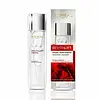What's inside
What's inside
 Key Ingredients
Key Ingredients

 Benefits
Benefits

 Concerns
Concerns

No concerns
 Ingredients Side-by-side
Ingredients Side-by-side

Water
Skin ConditioningButylene Glycol
HumectantAlcohol
AntimicrobialHydroxyethylpiperazine Ethane Sulfonic Acid
BufferingPropanediol
SolventPPG-6-Decyltetradeceth-30
EmulsifyingCaprylyl Glycol
EmollientSalicylic Acid
MaskingSodium Hydroxide
BufferingP-Anisic Acid
MaskingAdenosine
Skin ConditioningCapryloyl Salicylic Acid
ExfoliatingAcetyl Trifluoromethylphenyl Valylglycine
Skin ConditioningDisodium EDTA
Parfum
MaskingMadecassoside
AntioxidantBenzyl Salicylate
PerfumingLimonene
PerfumingLinalool
PerfumingBenzyl Alcohol
PerfumingPentylene Glycol
Skin ConditioningYeast Extract
Skin ConditioningTocopherol
AntioxidantWater, Butylene Glycol, Alcohol, Hydroxyethylpiperazine Ethane Sulfonic Acid, Propanediol, PPG-6-Decyltetradeceth-30, Caprylyl Glycol, Salicylic Acid, Sodium Hydroxide, P-Anisic Acid, Adenosine, Capryloyl Salicylic Acid, Acetyl Trifluoromethylphenyl Valylglycine, Disodium EDTA, Parfum, Madecassoside, Benzyl Salicylate, Limonene, Linalool, Benzyl Alcohol, Pentylene Glycol, Yeast Extract, Tocopherol
 Reviews
Reviews

Ingredients Explained
These ingredients are found in both products.
Ingredients higher up in an ingredient list are typically present in a larger amount.
Propanediol is an all-star ingredient. It softens, hydrates, and smooths the skin.
It’s often used to:
Propanediol is not likely to cause sensitivity and considered safe to use. It is derived from corn or petroleum with a clear color and no scent.
Learn more about PropanediolWater. It's the most common cosmetic ingredient of all. You'll usually see it at the top of ingredient lists, meaning that it makes up the largest part of the product.
So why is it so popular? Water most often acts as a solvent - this means that it helps dissolve other ingredients into the formulation.
You'll also recognize water as that liquid we all need to stay alive. If you see this, drink a glass of water. Stay hydrated!
Learn more about Water